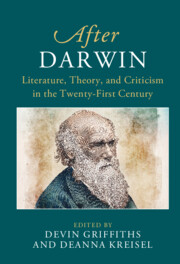Book contents
- After Darwin
- After Series
- After Darwin
- Copyright page
- Contents
- Figures
- Contributors
- Chapter 1 Introduction
- Part I Environments after Darwin
- Part II Differences after Darwin
- Chapter 6 Disability after Darwin
- Chapter 7 Race after Darwin
- Chapter 8 Darwin under Domestication
- Chapter 9 Feminism at War
- Chapter 10 The Survival of the Unfit
- Part III Humanism after Darwin
- References
- Index
Chapter 10 - The Survival of the Unfit
from Part II - Differences after Darwin
Published online by Cambridge University Press: 01 December 2022
- After Darwin
- After Series
- After Darwin
- Copyright page
- Contents
- Figures
- Contributors
- Chapter 1 Introduction
- Part I Environments after Darwin
- Part II Differences after Darwin
- Chapter 6 Disability after Darwin
- Chapter 7 Race after Darwin
- Chapter 8 Darwin under Domestication
- Chapter 9 Feminism at War
- Chapter 10 The Survival of the Unfit
- Part III Humanism after Darwin
- References
- Index
Summary
Is there room for weaklings in Darwin’s theory of evolution? The “survival of the fittest”—that muscular phrase taken from Herbert Spencer—would seem to suggest not. A more nuanced and counterintuitive picture emerges, however, when fitness is remapped: as a form of mutuality between the human and the nonhuman, rather than an exclusively human attribute vested in a single individual. I explore that possibility in the contemporary novel, a genre evolving steadily away from its Victorian antecedents, and circling back to the epic to reclaim an elemental realism, alert to the reparative as well as destructive forces of the nonhuman world. In Barbara Kingsolver’s The Poisonwood Bible and Richard Powers’s The Overstory, these nonhuman forces turn the novel into a shelter for disabled characters, granting them a testing ground and a future all the more vital for being uncertain.
Keywords
- Type
- Chapter
- Information
- After DarwinLiterature, Theory, and Criticism in the Twenty-First Century, pp. 121 - 134Publisher: Cambridge University PressPrint publication year: 2022

